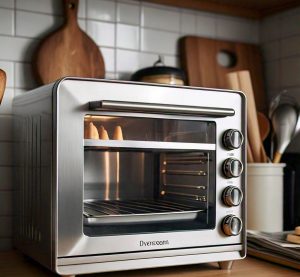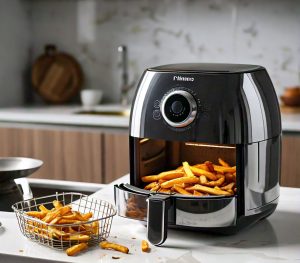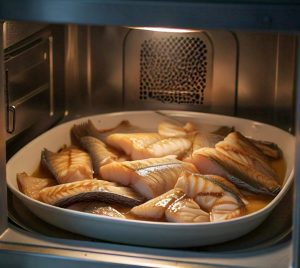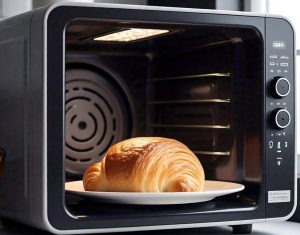A microwave is an appliance that heats and cooks food by exposing it to electromagnetic radiation in the microwave frequency range.
The question here revolves around the alternatives available if one doesn’t have a microwave or chooses not to use it.
This article will delve into discussing what you can use instead of a microwave, considering numerous suitable alternatives such as traditional ovens, toaster ovens, stovetops, and others. We’ll explore each alternative’s pros and cons while also touching upon how they affect the nutrients and flavors when compared with a microwave. Moreover, useful tips for using these alternatives efficiently will be shared alongside FAQs on this topic to provide comprehensive information about potential substitutes for microwaving.

Jump To:
What Can I Use Instead of a Microwave?
Indeed, you can opt for several alternatives instead of a microwave. Appliances like a toaster oven or an electric stove top serve similar purposes to a microwave. Convection ovens and slow cookers are also effective substitutes, offering their unique benefits such as even heat distribution and extended cooking times respectively. Using these alternatives, you may still perform tasks like heating food or cooking meals efficiently albeit with slight differences in the process.
Check out if a toaster oven can replace a microwave oven.
Facts About Alternatives to a Microwave
Here we will discuss the important things to note about alternatives to microwaves.
- Oven: An oven is a viable alternative that uses convection heat for cooking. It can be used for roasting, grilling, and baking.
- Toaster Oven: A toaster oven is small in size compared with an oven but efficient for heating smaller quantities of food.
- Cooktop: Provides direct heat from below and is suitable for boiling, frying or stewing foods.
- Crock-Pot or Slow Cooker: Ideal substitute for slow-cooking meals over several hours.
- Air Fryer: Utilizes circulating hot air to cook food that would normally be submerged in oil such as chicken wings or potato fries.
- Rice Cooker: Rice cooker can steam vegetables or heat up soup besides its primary function of steaming rice.
Now we have covered some key attributes and qualities of alternatives to microwaves, let’s move forward to discussing their specific applications and benefits.
What are the Alternatives to Microwaving?
There are various alternatives available if you don’t wish to use a microwave for heating or cooking your food. Traditional ovens prove to be an excellent option, providing consistent and even heating. Convection ovens, on the other hand, can cook food more quickly due to its fan that circulates hot air around the food. A stovetop can also be used for most types of cooking and is particularly great for frying and sautéing foods. For those who prefer slow-cooked meals, crockpots or slow cookers would be a suitable choice as they gently simmer food over several hours.
Tips for Microwaving
No need to worry about using a microwave with these tips at your disposal:
- Rotate the dish occasionally while it’s in there.
- Cover lightly with wax paper or plastic wrap.
- Pierce any whole foods like potatoes so steam doesn’t build up.
- Avoid aluminum foil as it could cause sparking.
- Foods heat unevenly in microwaves; therefore stirring halfway through helps distribute heat evenly.
In conclusion, we’ve explored other practical ways of heating or cooking your meal besides using a microwave and highlighted helpful recommendations when employing one.
We will now discuss some frequently asked questions in relation to this topic.
Check out if an air fryer can replace a microwave.

Frequently Asked Questions (FAQs)
In this section, we will now look at the most commonly asked questions related to alternatives to microwaving and heating things.
What can I use instead of a microwave for heating food?
If you are looking for an alternative to a microwave, consider using an oven or stove. These traditional methods may take longer but they heat your food evenly and often enhance the taste. A slow cooker is another great substitute which cooks over several hours ensuring your meal retains all its flavors.
Is it possible to warm up leftovers without a microwave?
Absolutely! Leftovers can be safely warmed up on the stove or in an oven. You just need to ensure that you stir regularly if using a saucepan on the stove, while when reheating in the oven, cover with foil to keep moisture in and prevent drying out.
Can I defrost food without using a microwave?
Yes, you can definitely defrost food without using a microwave. The safest ways are either by leaving it in the fridge overnight or under cold water in sealed packaging – both options minimize the risk of bacterial growth during thawing.
Are there any healthier alternatives than microwaving popcorn?
Making stovetop popcorn is not only healthier but also flavorful as compared to microwaved popcorn. It allows greater control over ingredients like the type of corn kernels used and the kind/amount of oil/butter applied thus controlling nutrient intake better.
We hope these answers have cleared some common queries regarding alternatives to microwaving for different purposes including warming up leftovers or popping corn!
Final Word
In conclusion, while it’s convenient and quick, one doesn’t necessarily need a microwave to heat food, defrost or even make popcorn. Alternatives like stoves and ovens can get the job done just as effectively, if not more so. Exploring these alternatives can often lead to discovering new tastes and flavors that microwaving might miss out on.



